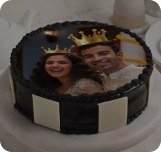
About Holi
Holi is one of the popular ancient Hindu festivals which is celebrated all over the world by Hindus and the Hindu diaspora. Holi is also known as the Festival of Colors. At some places, it is also called the Festival of Love as well as the Festival of Spring. It is a festival to meet others, play and laugh with them, forget and forgive past mistakes, and repair broken relationships. Furthermore, it has various cultural significances among various Hindu traditions of the Indian subcontinent.
The Holi festival celebrates the eternal and divine love of Radha and Krishna. Furthermore, it also signifies the victory of good over evil as it celebrates the victory of Lord Vishnu as Narasimha Narayana over Hiranyakashipu. Apart from this, this festival also celebrates the arrival of spring and the end of winter. The Holi celebration begins on the evening of the full moon day in the Hindu calendar month of Phalguna and lasts till the next day. The first evening of the Holi celebration is known as Holika Dahan or Chhoti Hoi. Furthermore, the next day is known as Rangwali Holi, Dol Purnima, Dhuleti, Dhulandi, etc.
On the eve of Holika Dahan, people gather and perform religious rituals in front of the bonfire. Furthermore, they pray that their internal evil is destroyed. The next morning, people celebrate the festival of colors in which they smear each other with colors. The festival of colors is for all. Friends or strangers, rich or poor, man or woman, children or elders, everybody plays Holi with each other. Furthermore, people come together to throw color on each other, laugh and gossip, and also share various Holi delicacies, food, and drinks.
Various Legends Related to Holi
Every festival has its own significance of celebration and Holi is not apart from that. It has a variety of legends in various regions of India.
The Legend Of Radha Krishna
Lord Krishan grew up in the Braj region of India. There the festival is celebrated in commemoration of the divine love of Radha and Krishna. It is said that Lord Krishna in his youth despaired to think whether the fair-skinned Radha would like him or not as his skin color is dark. After watching his desperation, his mother asks him to approach Radha and ask her to color his face in any color she wants. She did it and Radha and Krishna became a couple. Ever since then, the playful coloring of Radha and Krishna's face has been commemorated as Holi.
The Legend Of Vishnu
Holi is also celebrated as a festival of triumph of good over evil in honor of god Vishnu and his devotee Prahlada. According to a legend found in chapter 7 of Bhagavata Purana, King Hiranyakashipu who was the king of demonic Asuras earned a boon that gave him special powers. He couldn’t be killed by either a human being or an animal, either indoors or outdoors, either at day or at night, either by Astra or by Shastra, and either on land or in water or air. He grew arrogant and thought of himself as God and demanded that everyone worship only him. His own son, Prahlada, refused it and remained devoted to god Vishnu. This infuriated him into punishing Prahlada but none of which affected the boy.
After that, Prahlada's evil aunt Holika tricked him into sitting on a pyre with her. She was wearing a cloak so that fire couldn’t hurt her while Prahlada was sitting without any protection. Then, as the fire lit, the cloak flew from Holika and wrapped Prahlada due to which he survived while Holika burned. Furthermore, Vishnu took an avatar of Narasimha - half human and half lion (which is neither a human nor an animal), at dusk (which is neither a day nor a night), took Hiranyakashipu at a doorstep (which was neither indoors nor outdoors), placed him on his lap (which was neither land, water nor air), and then killed him with his lion claws (which were neither Astra nor Shastra). Since then, the Holika bonfire and Holi signify the celebration of the victory of good over evil.
The Legend Of Kama and Rati
Holi is also linked to god Shiva in other Hindu traditions such as Shaivism and Shaktism. According to that, Shiva was in deep meditation and goddess Parvati wanted to bring him back into the world. So, she seeks help from the Hindu god of love called Kamadeva on Vasant Panchami. Then, Kamadeva shoots arrows at Shiva which made him angry and he burned Kamadeva to ashes with his third eye. This upsets both Kama's wife Rati and Parvati. After that, Rati performs her own meditative asceticism for forty days. On the 40th day after Vasant Panchami, Shiva forgave Kamadeva and restored his life. This return of the god of love Kamadeva is celebrated as Holi.
Cultural Significance Of Holi
Holi has a cultural significance among various Hindu traditions of the Indian subcontinent. It is a perfect day to end and rid oneself of past errors. It is a perfect day to end conflicts by meeting others. It is a day to forget and forgive. Holi also marks the start of spring and the beginning of a good spring harvest season. Furthermore, it is an occasion for people to enjoy the changing seasons and make new friends.

















